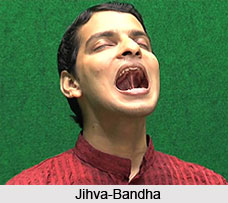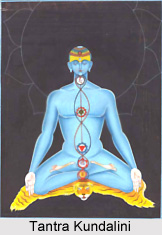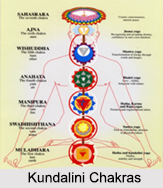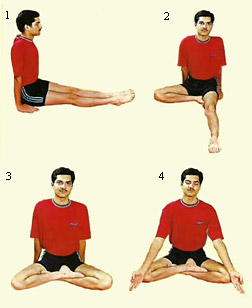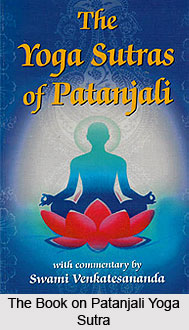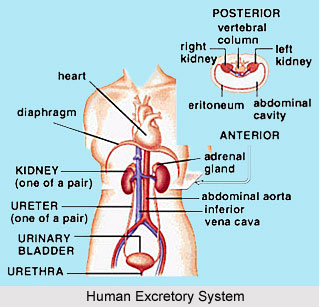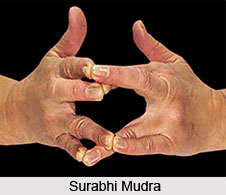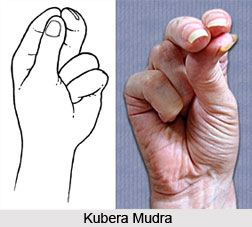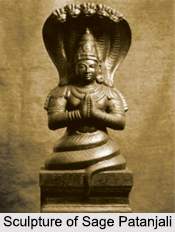 "The movements of consciousness are fivefold. They may be cognisable or non-cognisable, painful or non-painfu" , with this truth the Vrttayah pancatayyah klista aklistah stand as the fifth yoga sutra
"The movements of consciousness are fivefold. They may be cognisable or non-cognisable, painful or non-painfu" , with this truth the Vrttayah pancatayyah klista aklistah stand as the fifth yoga sutra
vntayah movements, modification
pancatayyah fivefold
klista afflicting, tormenting, distressing, painful
aklis0h untroubling, undisturbing, un-afflicting,un-distressing,pleasing
The movements of consciousness are fivefold. They may be cognisable or non-cognisable, painful or non-painful.
Fluctuations or modifications of the mind can be painful or non-painful, cognisable or non-cognisable. Pain may be secreted in the non-painful state, and the non-painful might be buried in the painful state. Both can be cognisable or non-cognisable.
When consciousness takes the lead, naturally the seer takes a back seat. The seed of change is in the consciousness and not in the seer. Consciousness perceives objects in relation to its own peculiarities, creating fluctuations and modifications in one`s thoughts. These modifications, of which there are five, are explained in the next sutra. They may be perceptible or unseen, painful or not, distressing or pleasing, cognisable or non-cognisable.
The previous sutra explains that the consciousness engages the seer with the objects seen by it, and invites five types of fluctuations, which can be divided and subdivided virtually infinitely.
Thoughts, when associated with torment, are known as painful (klisfa) conditions of the mind and consciousness. For instance, a live coal covered with ash appears to be ash. If one touches it, it scalds the skin straightaway. The live coal was in an incognisable, or aklisfa state. The moment the skin was scaled, it became cognisable, or klisfa. As torment predominates in pain, the satisfying state cannot be distinguished with it, though it exists alongside. The contentment of sex ends in the suffering of labour pain during the time of delivery, to be followed by all the cycles of joy, worry and sadness associated with parenthood.
Even exceedingly evolved souls, who have attained a specific spiritual height, like in 1.18 which describes a non-painful, idyllic state, are cautioned by Patanjali in 1.19. He cautions that, though the yogi remains liberated while the virtuous potencies continue to be powerful, the moment they fade away he has to struggle again, a painful end to the realisation of the spiritual elevation. Alternatively, the pains may be concealed, and may appear as non-painful for a long time, until they show up. For instance, cancer can remain undetected for a long time until it reaches a painful and excruciating state.
Cognisable pains and anguishes are controlled or exterminated by the practice of yoga, and by willpower. Incognisable pains are debarred from rising to the state of cognition by freedom from desires (vasanas) and by non-attachment (vairagya), in addition to yogic sadhana.
In 11.12, Patanjali uses the words drsfa (visible) and adrsfa (unperceived, invisible). These may be compared to klisfa and aklisfa. Nature causes the five fluctuations to become visible in their afflictive klisfa forms, while purusa tends to bring them to the aklisfa state. For instance, the klisfa form of memory is repression in psychological time, the aklisfa form is the function of unfairness. Both the painful and non-painful states can be perceptible or unseen. The known, visible pains and pleasures can be reduced or exterminated. In aching states the `non-pains` may be hidden, and as a result the virtues are hard to recognise or perceive. Both these states must be blockaded by yogic practice and renunciation. In sutras 1.23, 27, 28, 33-39, and in 11.29, Patanjali underlines the means of reaching the pinnacle of virtue, standing for freedom and beatitude.
The citta acts as the wheel, while klisfa and aklisfa states are like the two spokes of the wheel, causing fluctuations and modulations in one`s self. The vrttis in their klista and aklisfa manifestations are not distinguished parallel entities, but feed and support each other. For instance, the dullness which is the negative aspect of sleep backs the wrong perception of the other modulations of consciousness, while the positive experience of sleep (the passive, virtuous state experienced immediately on waking, when the T is silent) yields a flicker of an elevated state, boosting the efforts of right knowledge and prejudice. If the wheel is at rest, the spokes remain stable, and the citta becomes free from vrttis.



